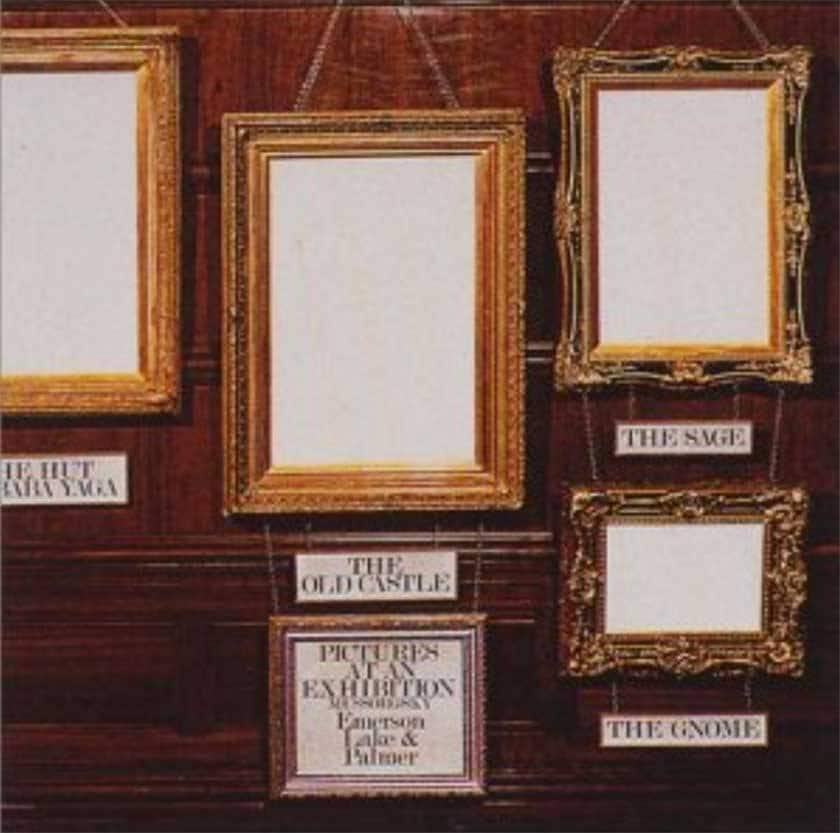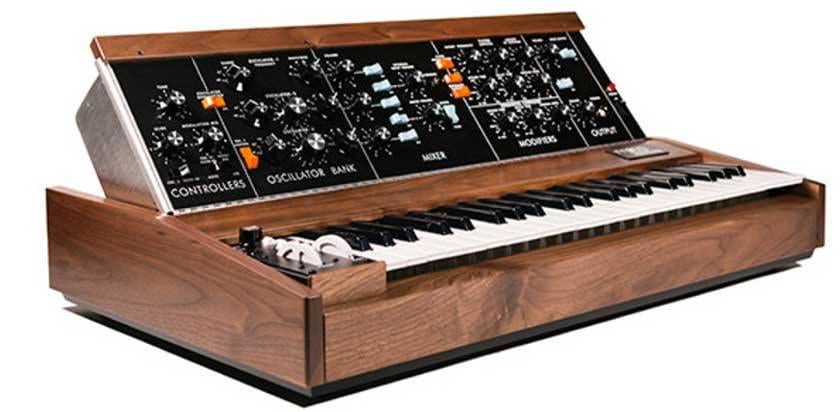The epoch emergence of synthesizers will revolutionize music. With the advent of new tools, musicians' ideas and efforts will change, and with the advent of synthesizers and peripherals, new music genres will emerge. This column examines the achievements of keyboards (synthesizers, organs, electric pianos, etc.) along with synthesizer chronicles and the music and musicians that colored the eras. Verification is not an exaggeration. I hope that you will listen to the music after reading the column and understand the roles and meanings of synthesizers and keyboards. In the column, I will also introduce synthesizer manufacturers, albums and songs with differences depending on the model and wonderful solos. If you can understand the wonderfulness of electric keyboard instruments in this column and enrich your life, it will be the writer's favor.
■ Pictures at an Exhibition Emerson, Lake & Palmer's Impact
I first recognized the instrument called a synthesizer in 1974 when I was 17 years old. ELP (Emerson, Lake & Palmer)'s live album "Pictures at an Exhibition" was a shock to me as I was listening to folk songs and classical music at the time. It was the tone of an instrument called a synthesizer, which was unfamiliar at the time when Keith Emerson manipulated it.
Pictures at an Exhibition B side, the sound made by Keith Emerson on the Moog synthesizer immediately after the bass solo by Greg Lake in The Curse of Baba Yaga makes changed my musical life. In the 1970s, there was little information, and the proper noun synthesizer was not well known. I didn't know what it is. "What the heck is this sound? But it's kind of cool!" An instrument called a synthesizer that I couldn't understand. Looking at the record liner, there was a picture of Keith Emerson playing. Also, the appearance was irresistible. Places Hammond on both sides of himself and two Moog synthesizers on top of it. High school students were once again excited to see the keyboards placed in parallel with their arms outstretched. For high school students who thought that keyboard instruments were to sit in a chair and play nicely, the sounds and playing style they had never heard were nothing less than shocking.

Emerson, Lake & Palmer "Pictures at an Exhibition"
At that time, rock was music in which the guitar played the leading role (as it is now as well...). Keith Emerson broke that concept and broke new rock horizons with an academic instrument called the keyboard. The synthesizer was a powerful weapon, which competed with the guitar. The synthesizer has knobs and more knobs on the top of the keyboard that control many sounds. The appearance of playing while operating it was in the rebellious and wild music of rock, and it was filled with some kind of intelligence.

MiniMoog synthesizer (image)
■ Synthesizer and keyboard purchase history
When I entered university, I bought a Roland 2VCO type SH-5 synthesizer. At that time, I was wondering whether to use a Korg DV-800 synth or not, but I chose Roland, which looks more like a Moog synthesizer and has a more mechanical and profound feeling. This was also influenced by Keith Emerson, who controls the Moog synthesizer.
After that, my habit of collecting synths did not subside, and I am still doing so in the present. I have purchased more than 25 synthesizers and keyboard instruments so far. Below is the list.
Roland: SH-5, JUPITER-6, D-50, S-550, RD-600
Korg: Polyphonic Ensemble Orchestra PE-2000, POLY-6, WAVESTATION, SV-1
Oberheim: XPANDER, MATRIX-6
Yamaha: DX-7, CX-5, DX-7Ⅱ, MODX6
Ensoniq: ESQ-1, SQ-R (sound source rack)
Alesis: QUADRASYNTH
Hammond: NewX-5, XB-1
Node: Electro-6
Waldorf: BLOFELD KEYBOARD
Emu: Vintage Keys (Sound Source Rack)
Casio: SK-1
Fender: Rhodes suitcase 88key
Cartsell: K2000
Buying a lot of synthesizers and keyboard instruments set some standards for me. I hope you can see how in the column below for that area.
■ Synthesizer structure
Let's return to "Pictures at an Exhibition". This is the tone of the synth that was played after Greg Lake's bass solo. The mechanism of the synthesizer consists of VCO (transmitter), VCF (filter), VCA (amplifier), etc. After the bass solo on The Exhibition, here, Keith is manipulating resonance by operating the knobs such as the VCF cutoff frequency and resonance that affect the tone change. Cutoff frequencies and resonance are somehow linked. It is this VCF (Voltage Control Filter) that controls the sound of an analog synthesizer, and it can be said that the effectiveness of this filter is the key to the synthesizer. If you understand this mechanism, there is nothing else regarding how to produce that tone. However, it is no exaggeration to say that the cutoff frequency and resonance settings of an analog synthesizer determine the tone of the synthesizer and make the synth a synth.
The instruments used by Keith Emerson in "Pictures of the Exhibition" are (1) Moog Modular Synthesizer IIIc (2) Minimoog (3) Hammond C3 (4) Hammond L (5) Live Piano.
■ Characteristics of Moog synthesizers (at the time of the 1970s)
Synthesizers at the time couldn't produce chords yet. The chords and harmonies that form the basis of music cannot be produced. Many synths are now polyphonic and can produce chords. A polyphonic synthesizer that can produce chords will have to wait until Prophet-5 (the Minimoog is still monophonic). However, although the Moog sound was a single note, it was thick and full of presence. The Minimoog used by Keith is still active and used by many musicians. In the 1980s, David Foster and others used the bass sound of the Minimoog, and that sticky sound that was not buried in the orchestra dominated the world and was in the limelight. However, the Minimoog also had its weaknesses. It was that the tuning was not stable. The musician connected the tuner to the Minimoog and was always careful. The Minimoog is divided into several generations, but the developer, Dr. Moog, commented that it would be more stable in the second half. After that, the twists and turns of the Minimoog were renewed, and in 2002, it was released as the Minimoog Voyager. The Minimoog has always been the first choice from musicians. Next time, I will introduce the Moog synthesizer, part 2 and the masterpiece that contains the sounds of the Minimoog. I will also provide you with the latest information and albums with the Moog. Looking forward to it!
● Albums, song titles, and synthesizers used this time
・"Pictures at an Exhibition" Emerson Lake & Palmer
・ Song title: Curse of Baba Yaga
・ Instruments used: Minimoog, Moog Modular System IIIc, Hammond C3, Hammond L, live piano
● Next time, the trailer "MiniMoog synthesizer masterpiece, MiniMoog users"
・ Yes "Yessongs" Rick Wakeman
・ Pink Floyd "Wish You Were Here" Rick Wright
・ Jeff Beck "Live Wire" Jan Hammer
・ UK "Night After Night" Eddie Jobson
・ Greg Mathieson Project
・"Baked Potato Super Live" Greg Mathieson


























